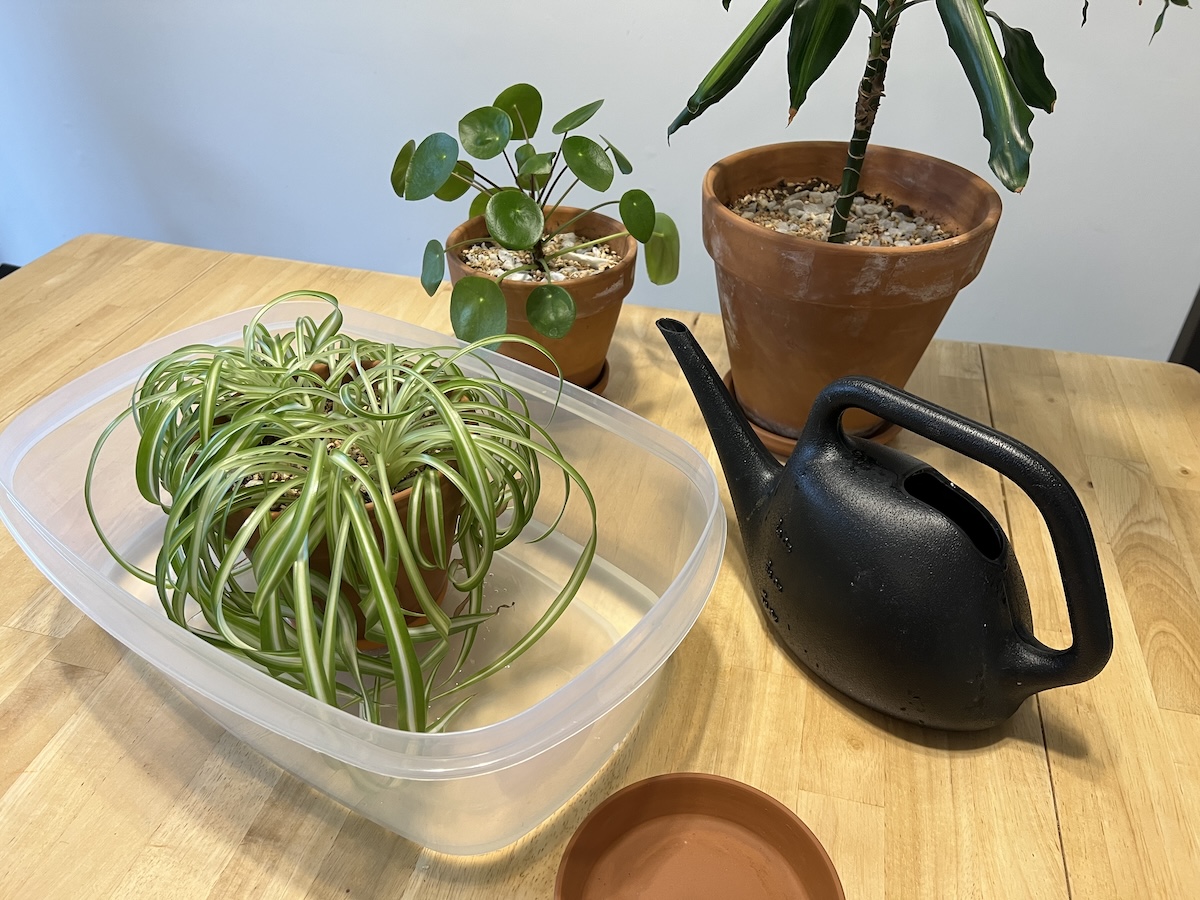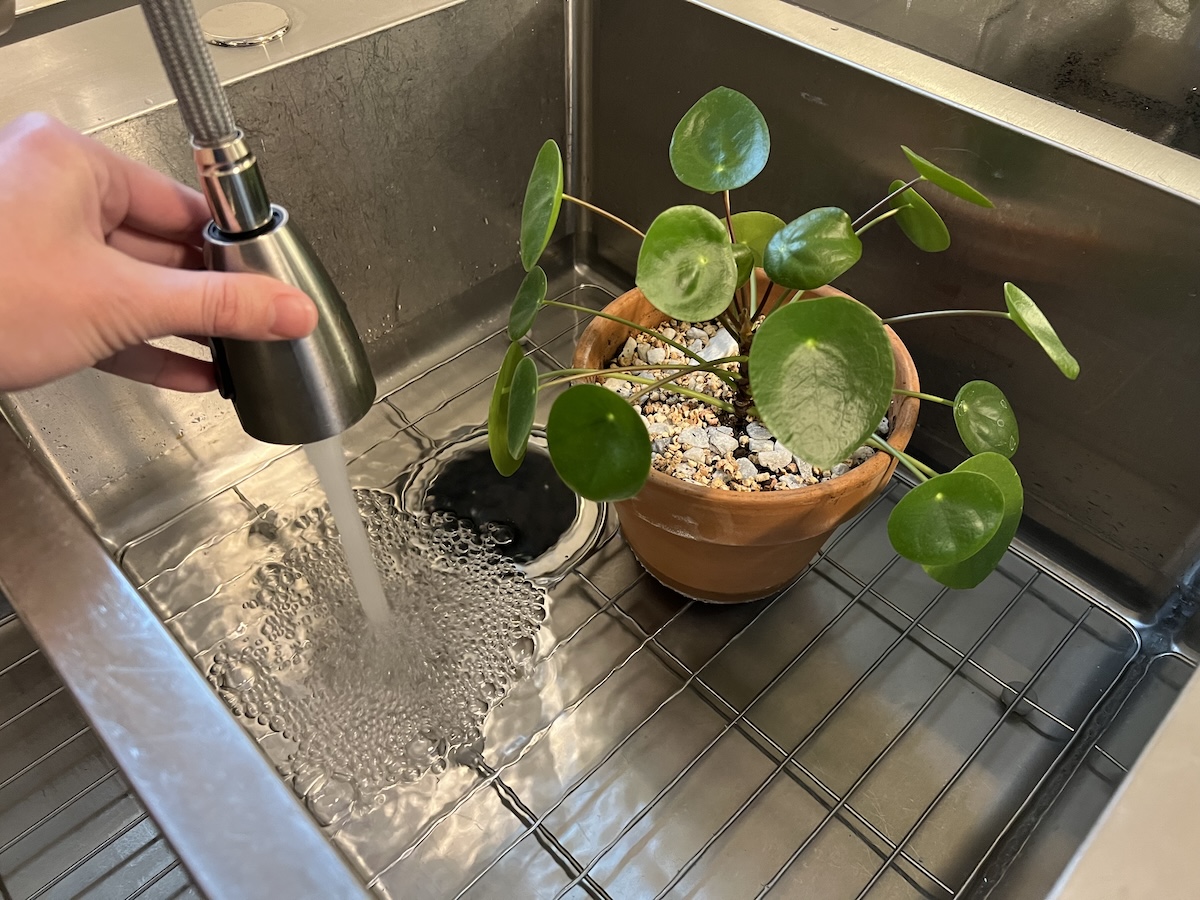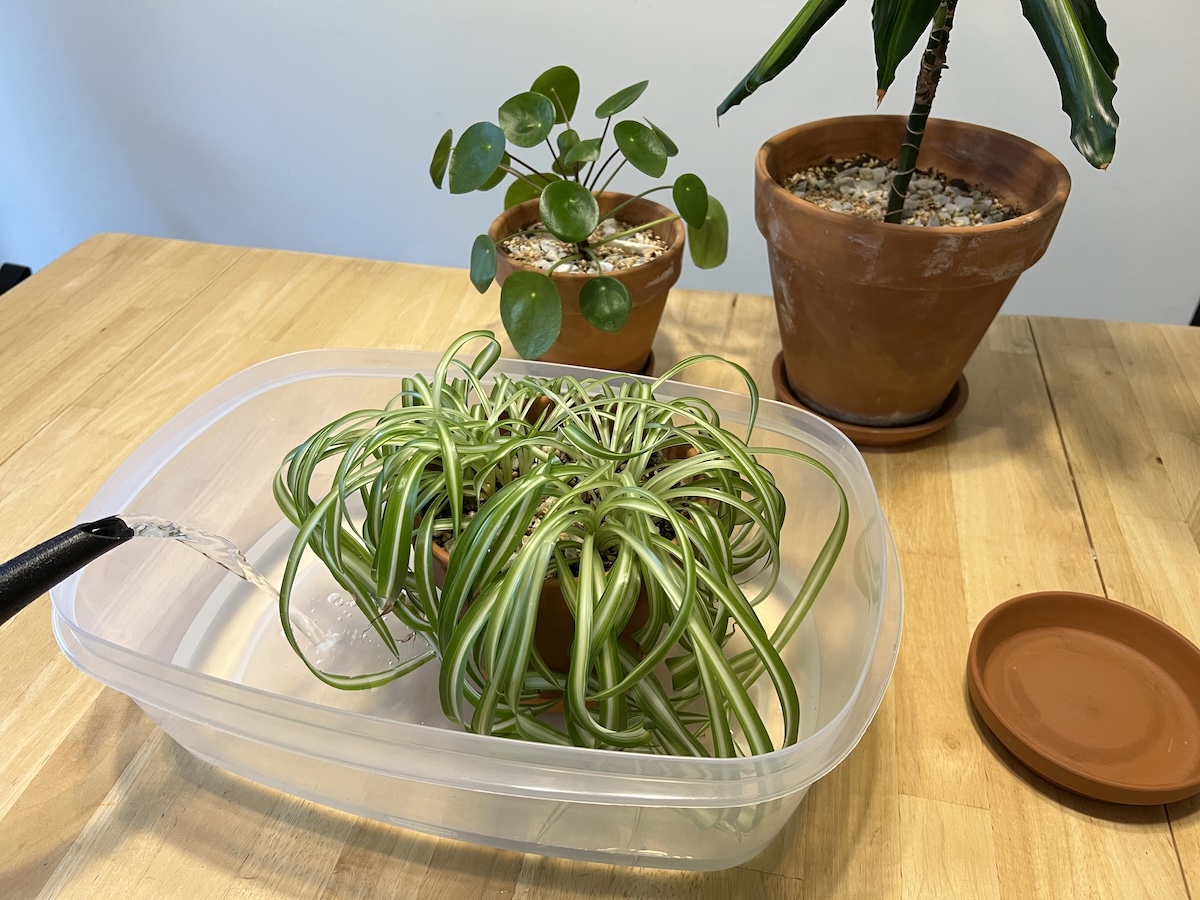

We may earn revenue from the products available on this page and participate in affiliate programs. Learn More ›
Q: I’ve seen one of my garden friends bottom-watering plants such as her African violets. Why does she feel that it is necessary for her to do that rather than using a can for watering plants as I do?
A: Actually, bottom-watering—aka sub-irrigation—isn’t necessary for most houseplants. As Barbara Pleasant notes in The Complete Houseplant Survival Manual, the “best way to water most plants is from the top, by slowly pouring water from a bottle or watering can around the plant’s crown.”
However, water splashing onto the fuzzy foliage of gesneriads such as African violets and gloxinias frequently leaves ugly water spots on those leaves—especially so if the water is cold and hard (high in minerals). So, bottom-watering plants is sometimes recommended for spot prevention as well as for other reasons indicated below.
RELATED: What Does Root Rot Look Like in Houseplants?
Bottom-watering is an effective way to irrigate potted plants.
Watering plants from the bottom saturates the potting mix more thoroughly than top-watering does. It simply means setting a potted plant in a shallow pan or saucer containing water until enough moisture is absorbed through the pot’s drainage holes that the potting mix is consistently damp.
Bottom-watering often is recommended for plants that have dried out so extremely that their potting mix has cracked and/or pulled away from the sides of the container enough to put it in the red zone on a moisture meter. Water applied from the top might just course through those holes without adequately dampening the mix. When bottom-watering such an emergency case, you might need to hold the pot down until its mix begins taking up some of the water. Otherwise, the pot will be inclined to float on top of the water instead.

What are the benefits of bottom-watering plants?
- Spotless leaves: As was previously mentioned, bottom watering can prevent hard water speckles that are caused by water splashing onto and drying on the leaves. Alternatively, gardeners can use lukewarm rainwater or bottled water for their plant watering or find a can or bottle with a long spout that reaches between and/or under the leaves to avoid splashing them.
- Strong seedlings and fungus-free foliage: Bottom watering helps prevent damping off and other fungal diseases. Seedlings, frequently grown in planting packs rather than pots, often are watered from the bottom because splashing water can spread the spores that cause damping off disease or the ones that cause leaf spot diseases in plants such as mums. However, gardeners may be able to avoid the latter problem by only watering plants in the morning so they have time to dry out before nightfall.
- Even moisture: Another of the benefits of bottom-watering plants is that it moistens all of the soil in the pot rather than just some of it. Top-watering frequently leaves dry spots in pots which will cause some roots not to receive adequate moisture. For that reason, Pleasant recommends that—in addition to top-watering—you bottom-water all of your plants about once per month to prevent such parched “pockets” from forming.
Occasional top-watering is necessary to flush the soil.
Bottom-watering eventually will cause a buildup of minerals and fertilizer salts in pots. According to Colorado State University Extension, “High salt levels inhibit plant growth by reducing water uptake, restricting root growth, burning foliage, limiting seed germination, and inhibiting flowering.”
Therefore, if you are bottom-watering indoor plants, leach the potting mix once every 3 to 4 months to get rid of those salts. To do so, remove the plant’s pot from its saucer and place it in a sink or bathtub with the drain open. Pour water into the top of the pot—using a watering can with a narrow spout to avoid spattering the leaves—until you see water trickling freely out of the holes at the bottom of the pot and running down the drain. Leave the pot there until it has stopped dripping before returning it to its saucer.
RELATED: Master Easy Kalanchoe Plant Care for a Blaze of Colorful Blooms Year After Year

How to Bottom-Water Plants
When considering how to bottom-water plants, keep in mind that the method won’t work on pots without drainage holes. If using chlorinated tap water, fill your watering can a day ahead of time to allow the chlorine to evaporate.
- Pour water into the plant’s saucer or an unperforated flat or dishpan to a depth that will cover the pot’s drainage holes but not entirely submerge the pot, varying from ½ inch for seedling packs to several inches for larger pots.
- Set the pot or planting pack in that water.
- Once the surface of the pot or pack’s potting mix is damp, remove it from the flat or dishpan or empty the excess water from its saucer.
- As for how long to bottom-water plants, to prevent overwatering, don’t allow a plant to sit in water for more than 30 minutes unless it is a very large specimen that requires a longer saturation time.
RELATED: This $10 Tool Turned Me Into a Green Thumb—Seriously!
